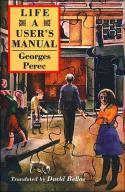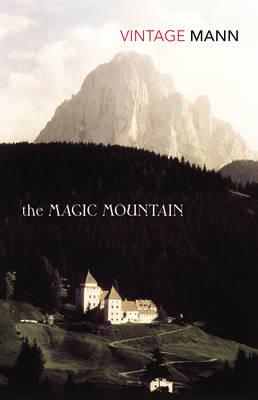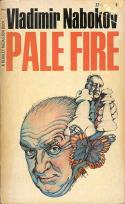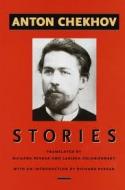Author Photo And Bio
 1. Stories of Franz Kafka (1883–1924). Kafka’s fictions express existential alienation, but without the self-pity or blame; there’s great humor amidst the angst. Despite his radical modernism, echoes of Talmudic and European folk traditions and Kafka’s own formal High German prose style lend his fables all the timelessness of nightmare. His stories range from the slightest fragments, parables, and epigrams to the novella-length classic, The Metamorphosis. Featuring anthropomorphic beasts as well as magisterial paradoxes of “the Law,” Kafka’s inventive tales are a treasure-house of the neurotic and prophetic.
1. Stories of Franz Kafka (1883–1924). Kafka’s fictions express existential alienation, but without the self-pity or blame; there’s great humor amidst the angst. Despite his radical modernism, echoes of Talmudic and European folk traditions and Kafka’s own formal High German prose style lend his fables all the timelessness of nightmare. His stories range from the slightest fragments, parables, and epigrams to the novella-length classic, The Metamorphosis. Featuring anthropomorphic beasts as well as magisterial paradoxes of “the Law,” Kafka’s inventive tales are a treasure-house of the neurotic and prophetic.
 2. Life: A User’s Manual by Georges Perec (1978). (See Arthur's appreciation below).
2. Life: A User’s Manual by Georges Perec (1978). (See Arthur's appreciation below).
 3. The Magic Mountain by Thomas Mann (1924). Hans Castorp visits his cousin at a sanatorium in the mountains of Switzerland. Soon he too becomes ill (maybe) and checks into the hospital —for seven years. In this sanctuary, Hans and the sanatorium’s denizens endlessly debate questions of morality, politics, and culture, as the “real world” moves inexorably toward the horror of World War I. A meditation on time, an inquiry into how life ought to be lived, and an unflinching look at evil, Mann considered the ideas in his monumental novel so challenging that he said it must be read at least twice.
3. The Magic Mountain by Thomas Mann (1924). Hans Castorp visits his cousin at a sanatorium in the mountains of Switzerland. Soon he too becomes ill (maybe) and checks into the hospital —for seven years. In this sanctuary, Hans and the sanatorium’s denizens endlessly debate questions of morality, politics, and culture, as the “real world” moves inexorably toward the horror of World War I. A meditation on time, an inquiry into how life ought to be lived, and an unflinching look at evil, Mann considered the ideas in his monumental novel so challenging that he said it must be read at least twice.
 4. Pale Fire by Vladimir Nabokov (1962). “It is the commentator who has the last word,” claims Charles Kinbote in this novel masquerading as literary criticism. The text of the book includes a 999-line poem by the murdered American poet John Shade and a line-by-line commentary by Kinbote, a scholar from the country of Zembla. Nabokov even provides an index to this playful, provocative story of poetry, interpretation, identity, and madness, which is full to bursting with allusions, tricks, and the author’s inimitable wordplay.
4. Pale Fire by Vladimir Nabokov (1962). “It is the commentator who has the last word,” claims Charles Kinbote in this novel masquerading as literary criticism. The text of the book includes a 999-line poem by the murdered American poet John Shade and a line-by-line commentary by Kinbote, a scholar from the country of Zembla. Nabokov even provides an index to this playful, provocative story of poetry, interpretation, identity, and madness, which is full to bursting with allusions, tricks, and the author’s inimitable wordplay.
 5. Hamlet by William Shakespeare (1600). The most famous play ever written, Hamlet tells the story of a melancholic prince charged with avenging the murder of his father at the hands of his uncle, who then married his mother and, becoming King of Denmark, robbed Hamlet of the throne. Told the circumstances of this murder and usurpation by his father’s ghost, Hamlet is plunged deep into brilliant and profound reflection on the problems of existence, which meditations delay his revenge at the cost of innocent lives. When he finally acts decisively, Hamlet takes with him every remaining major character in a crescendo of violence unmatched in Shakespearean theater.
5. Hamlet by William Shakespeare (1600). The most famous play ever written, Hamlet tells the story of a melancholic prince charged with avenging the murder of his father at the hands of his uncle, who then married his mother and, becoming King of Denmark, robbed Hamlet of the throne. Told the circumstances of this murder and usurpation by his father’s ghost, Hamlet is plunged deep into brilliant and profound reflection on the problems of existence, which meditations delay his revenge at the cost of innocent lives. When he finally acts decisively, Hamlet takes with him every remaining major character in a crescendo of violence unmatched in Shakespearean theater.
 6. In Search of Lost Time by Marcel Proust (1913–27). It’s about time. No, really. This seven-volume, three-thousand-page work is only superficially a mordant critique of French (mostly high) society in the belle époque. Both as author and as “Marcel,” the first-person narrator whose childhood memories are evoked by a crumbling madeleine cookie, Proust asks some of the same questions Einstein did about our notions of time and memory. As we follow the affairs, the badinage, and the betrayals of dozens of characters over the years, time is the highway and memory the driver.
6. In Search of Lost Time by Marcel Proust (1913–27). It’s about time. No, really. This seven-volume, three-thousand-page work is only superficially a mordant critique of French (mostly high) society in the belle époque. Both as author and as “Marcel,” the first-person narrator whose childhood memories are evoked by a crumbling madeleine cookie, Proust asks some of the same questions Einstein did about our notions of time and memory. As we follow the affairs, the badinage, and the betrayals of dozens of characters over the years, time is the highway and memory the driver.
 7. War and Peace by Leo Tolstoy (1869). Mark Twain supposedly said of this masterpiece, “Tolstoy carelessly neglects to include a boat race.” Everything else is included in this epic novel that revolves around Napoleon’s invasion of Russia in 1812. Tolstoy is as adept at drawing panoramic battle scenes as he is at describing individual feeling in hundreds of characters from all strata of society, but it is his depiction of Prince Andrey, Natasha, and Pierre —who struggle with love and with finding the right way to live —that makes this book beloved.
7. War and Peace by Leo Tolstoy (1869). Mark Twain supposedly said of this masterpiece, “Tolstoy carelessly neglects to include a boat race.” Everything else is included in this epic novel that revolves around Napoleon’s invasion of Russia in 1812. Tolstoy is as adept at drawing panoramic battle scenes as he is at describing individual feeling in hundreds of characters from all strata of society, but it is his depiction of Prince Andrey, Natasha, and Pierre —who struggle with love and with finding the right way to live —that makes this book beloved.
 8. Stories of Anton Chekhov (1860–1904). The son of a freed Russian serf, Anton Chekhov became a doctor who, between the patients he often treated without charge, invented the modern short story. The form had been overdecorated with trick endings and swags of atmosphere. Chekhov freed it to reflect the earnest urgencies of ordinary lives in crises through prose that blended a deeply compassionate imagination with precise description. “He remains a great teacher-healer-sage,” Allan Gurganus observed of Chekhov’s stories, which “continue to haunt, inspire, and baffle.”
8. Stories of Anton Chekhov (1860–1904). The son of a freed Russian serf, Anton Chekhov became a doctor who, between the patients he often treated without charge, invented the modern short story. The form had been overdecorated with trick endings and swags of atmosphere. Chekhov freed it to reflect the earnest urgencies of ordinary lives in crises through prose that blended a deeply compassionate imagination with precise description. “He remains a great teacher-healer-sage,” Allan Gurganus observed of Chekhov’s stories, which “continue to haunt, inspire, and baffle.”
 9. The Three Musketeers by Alexandre Dumas (1844). “An almost endless chain of duels, murders, love affairs, unmaskings, ambushes, hairbreadth escapes, wild rides,” is how the critic Clifton Fadiman described this swashbuckling tale. In 1625, young D’Argent travels to Paris where he joins three Musketeers who guard King Louis XIII and live by the motto “All for one, and one for all.” Together they foil a plot against the king hatched by the evil Cardinal Richelieu and the gorgeous spy “Milady.”
9. The Three Musketeers by Alexandre Dumas (1844). “An almost endless chain of duels, murders, love affairs, unmaskings, ambushes, hairbreadth escapes, wild rides,” is how the critic Clifton Fadiman described this swashbuckling tale. In 1625, young D’Argent travels to Paris where he joins three Musketeers who guard King Louis XIII and live by the motto “All for one, and one for all.” Together they foil a plot against the king hatched by the evil Cardinal Richelieu and the gorgeous spy “Milady.”
 10. The Odyssey by Homer (ninth century b.c.e.?). Where The Iliad tells of war, The Odyssey is the story of survival and reconciliation following the ten-year battle with Troy. Where Achilles was defined by warrior brutality, Odysseus, King of Ithaca, is defined by his intelligence and wit. This epic poem follows Odysseus on his adventures as he struggles —against the threats of sea monsters and the temptation of the sirens’ song —to be reunited with his son Telemachus, his faithful, clever queen Penelope, and their kingdom.
10. The Odyssey by Homer (ninth century b.c.e.?). Where The Iliad tells of war, The Odyssey is the story of survival and reconciliation following the ten-year battle with Troy. Where Achilles was defined by warrior brutality, Odysseus, King of Ithaca, is defined by his intelligence and wit. This epic poem follows Odysseus on his adventures as he struggles —against the threats of sea monsters and the temptation of the sirens’ song —to be reunited with his son Telemachus, his faithful, clever queen Penelope, and their kingdom.
Appreciation of Life: A User’s Manual by Arthur Phillips
The first miracle: A novel built from a strictly limited construction —the description of one single moment in a Paris apartment building —blossoms into an encyclopedia of stories and life spanning centuries, the globe, the history of literature. The second miracle: A moving, humane novel composed of implausible, even impossible parts. Perec’s brainy puzzle-book somehow produces the exhilarating, alternating certainties that life is beautiful, cruel, sweet, meaningful.
Life’s hundred and some tales about the residents of 11 rue Simon-Crubellier sometimes slow to Proustian crawls, and a reader’s joy is in lounging, savoring every turn of phrase. A page later, though, Perec (almost audibly laughing) gallops us into insane plots of revenge, kleptomaniacal magistrates, intricate con games, a billionaire’s entire life spent on a single project, and the heiress’s egg collection, the destruction of which prompted the inaccurate painting, which later hung in . . .
Pictures within pictures, memories within memories, letters within letters, reflections of reflections, the novel represents the unachievable ambitions of the painter Valène, burning to accomplish on canvas what Perec actually did in text: a portrait of life in all its possibility, speed, variety, shimmer, impermanence, blindingly rich and achingly temporary.
Published in 1978, Life is infinitely entertaining, but it also can change how you see your surroundings; the wall between novel and world leaks. If Perec can imagine four paintings (and their histories) reproduced inside yet another painting, and the wallpaper against which that work hangs, and the life of the man who selected the wallpaper, then suddenly the world outside the book more proudly displays its own wondrous plumage, imagined by some creator even more ingenious than Perec. That all of his work (or Valène’s, or Perec’s) is so painfully transient only adds to its splendor, just as the lives led in the apartments at 11 rue Simon-Crubellier are both madly full and too quickly finished, forgotten.